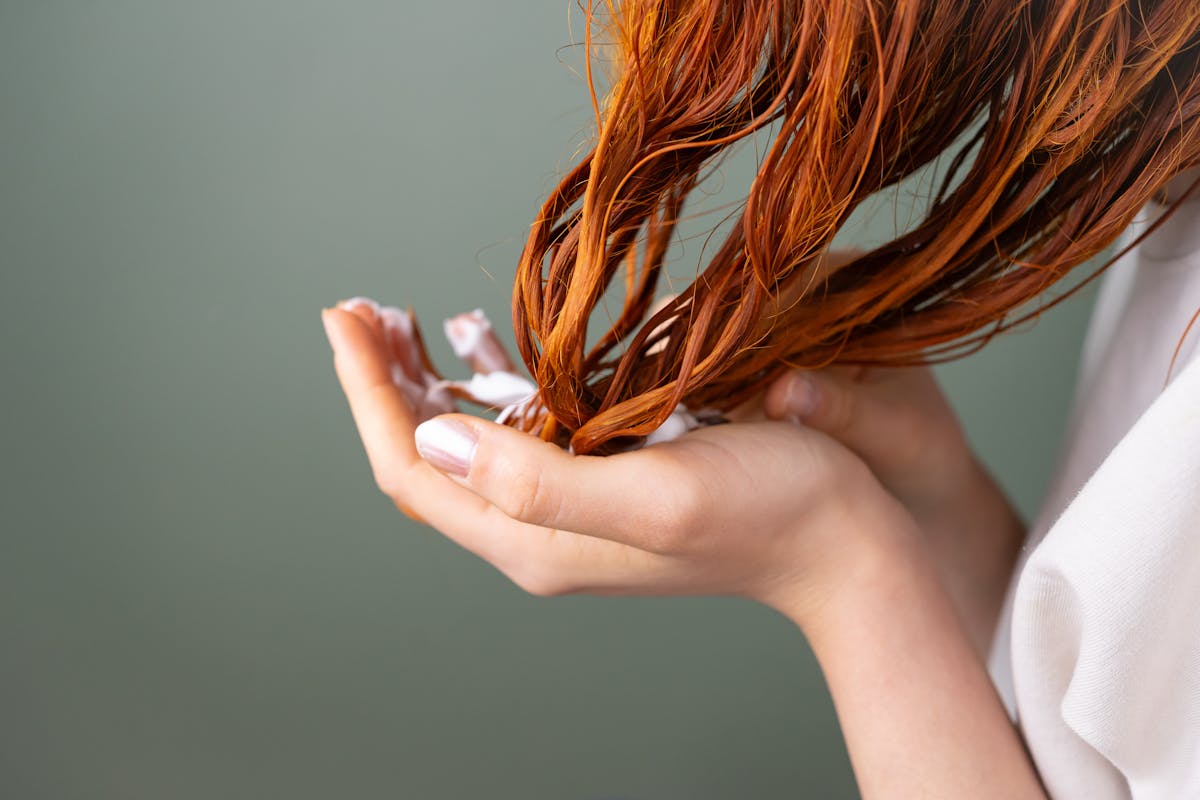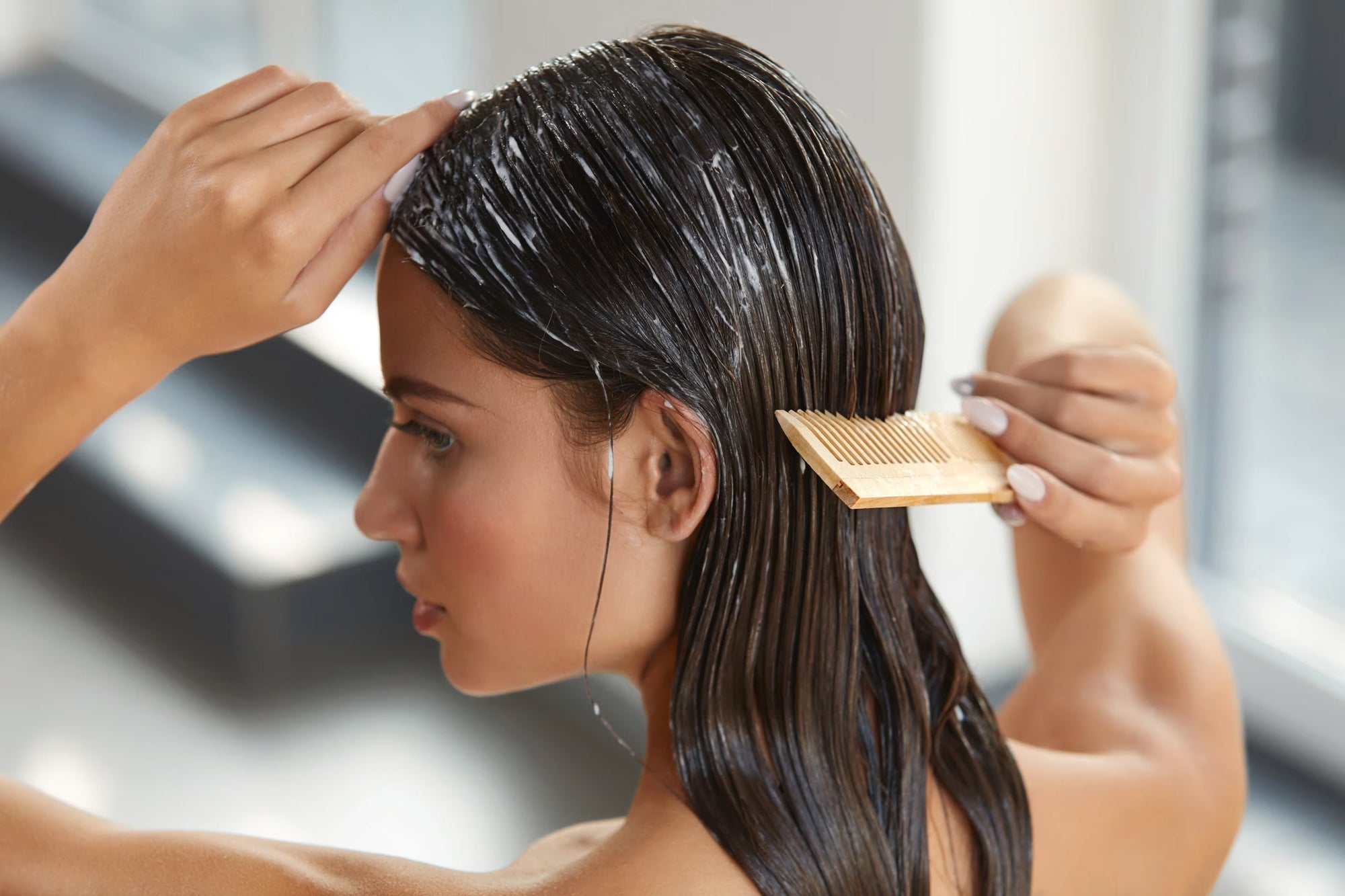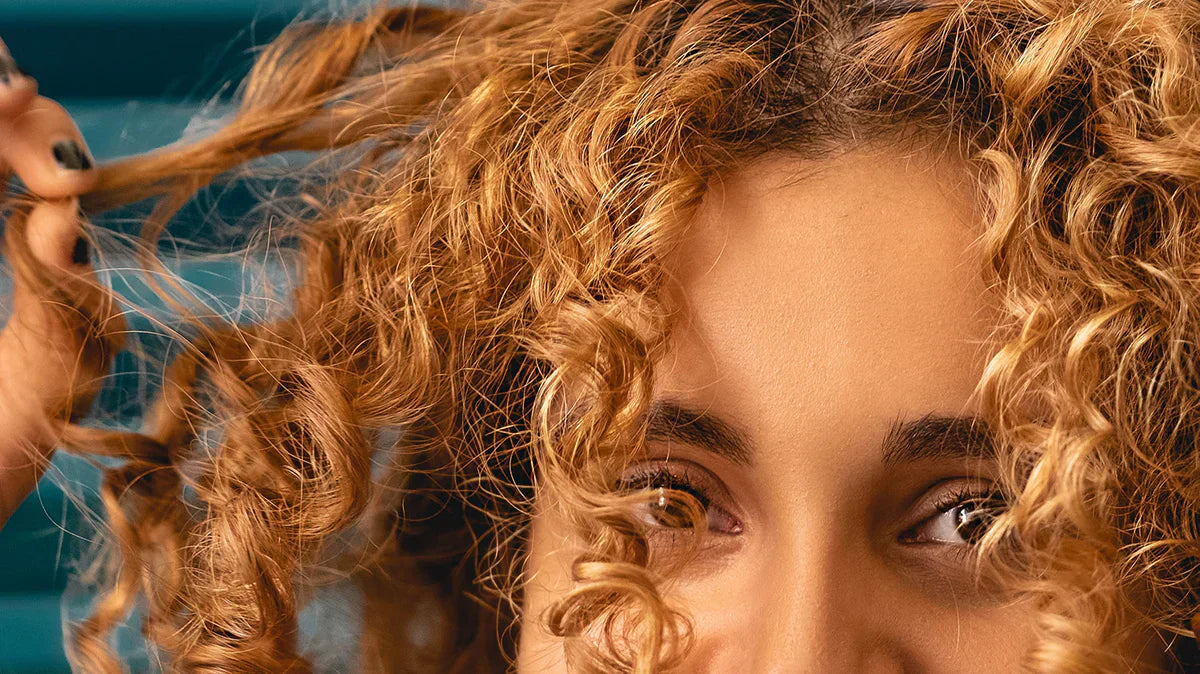Hair care is not complete without conditioner. Shampoo removes dirt and oil, while conditioner restores moisture, seals the cuticle and makes hair more manageable. The cuticle is made of overlapping cells that can lift or break due to heat styling, coloring and environmental exposure. This leaves hair dry, dull and prone to damage. Conditioner does its job by coating the hair shaft in a protective layer of moisturizing and smoothing agents which reduces friction and protects hair from breakage. Omitting conditioner leaves hair bare, dry and open to damage—particularly if you color, bleach, straighten or blow-dry hair regularly. Beauty Market Online offers salon-quality conditioners from reputable brands, each specifically designed to address various hair textures, types, and objectives—from smoothing and repairing to hydrating and strengthening.
How Conditioner Works at the Molecular Level
Conditioner repairs what daily life has worn down. Every hair strand is constructed of keratin that get damaged with brushing, heat treatment, dyeing and even pillow or hat rubbing. Bit by bit, the outer protective coating or cuticle is lifted or chipped which gives hair a dull, coarse and frizzy look. Conditioner does this by targeting these areas of damage. Most formulas contain cationic surfactants, which are positively charged ingredients. Damaged hair has a negative charge that allows the conditioner to bind to those damaged areas directly. It helps close the cuticle, smooth out the hair, and remove the static that causes flyaways.
Advanced conditioners also deliver ingredients like
-
Silicones to coat and smooth the outer layer
-
Proteins to repair micro-tears in the cortex
-
Humectants like glycerin that pull in moisture from the environment
-
Natural oils that lock in hydration and increase softness
Types of Conditioners and Their Targeted Benefits
Conditioners are not one-size-fits-all. There is a specific type for addressing specific hair requirements in terms of condition, thickness and styling regimen. Knowing the variations can assist you in having a more tailored and efficient routine.
Rinse-Out Conditioners
They are most widely used and are applied after shampooing. They act immediately to soften, smooth and detangle hair. Best for everyday usage, particularly for hair that gets shampooed every day. Use Keragen Volumizing Conditioner, which deeply nourishes and detangles while adding volume to fine hair. Formulated with keratin and collagen, it fortifies every strand without heavy buildup and leaves hair smooth, supple and full of volume.
Deep Conditioners and Hair Masks
These are formulated to remain on longer—usually 10–30 minutes—and penetrate the hair shaft more intensely. They are particularly helpful for chemically treated, color-treated or extremely dry hair. Apply weekly for optimal results. The KERAGEN Keratin Smoothing Hair Mask is an ideal solution for dry, damaged locks. It deeply nourishes, restores and smooths each strand with keratin, collagen and jojoba oil, which make hair softer, shinier and more manageable after the first use.
Leave-In Conditioners
These aren't rinsed out and offer ongoing protection during the day. Excellent for frizzy hair, these conditioners help seal in moisture and enhance manageability without weighing hair down.
Co-Wash Conditioners
Also referred to as cleansing conditioners, these are designed to wash and condition the hair at the same time. Ideal for curly, dry or textured hair, co-washing reduces stripping while preserving moisture.
Why Skipping Conditioner Can Damage Your Hair
Without conditioner, shampoo alone strips oils without replacing moisture. This imbalance leads to
-
Dry, brittle texture
-
Increased static and tangling
-
Frizz and breakage from brushing
-
Color fading from porous hair shafts
Using heat tools or being exposed to sun and wind magnifies this damage. The cuticle remains lifted and unsealed which causes moisture loss and degradation of proteins.
Hair Type Determines the Conditioner You Need
Matching your conditioner to your hair type ensures maximum benefits. Hair texture, density and porosity influence how well products absorb and work. Without a tailored approach, even the ideal formula may fail.
Fine or Limp Hair
Requires volume-building formulas that won't weigh the strands down. Light protein-based conditioners work best for fine hair. Avoid heavy oils or butters unless ends are particularly dry.
Thick, Coarse, or Curly Hair
Demands maximum moisture and structure repair ingredients. Find conditioners with natural oils (such as argan or avocado), butters (such as shea) and proteins that nourish and seal curly hair.
Color-Treated Hair
It needs special attention to maintain its color. Sulfate-free, pH-balanced conditioners with UV protectors and color-protecting ceramides will make dye last longer and fade less. Color-treated hair requires a little extra care and KERAGEN Purple Conditioner provides just that. It reduces brassiness in blonde and silver colors while hydrating every hair strand with keratin, collagen and vital vitamins.
Chemically Treated or Damaged Hair
Requires repairing conditioners that contain bond-repair agents, amino acids and hydrolyzed proteins. These repair the internal framework.
Key Ingredients That Make Conditioner Effective
Effective conditioners combine hydration, repair, and protection. Look for these ingredients:
-
Hydrolyzed keratin: Fills microscopic gaps in the cuticle
-
Argan or coconut oil: Improves elasticity and softness
-
Glycerin and panthenol: Attract and lock in moisture
-
Silk proteins and amino acids: Strengthen hair’s internal structure
-
Shea butter: Seals in moisture for thick and curly hair types
How Often Should You Use Conditioner?
Conditioner frequency is based on hair type, environmental exposure and styling routines. A majority of people need to use a conditioner after every shampoo, but some need adjustments depending on oil production, heat exposure or level of damage.
Oily or Fine Hair: Use a lightweight volumizing conditioner every time you wash—apply only at the ends to prevent greasy roots.
Dry, Curly, or Coily Hair: Condition with every wash. These hair types lose moisture rapidly and respond well to richer, cream-based conditioners. MODA Hair Conditioner revives dry, brittle hair with intense moisture and nutrition. Formulated with jojoba oil, vitamin E and a combination of plant extracts and essential vitamins, it restores damage, calms frizz, and enhances shine.
Color-Treated or Chemically Processed Hair: Apply a targeted conditioner with each wash to lock in color and shield the hair shaft.
Swimmers or Outdoor Enthusiasts: Wash hair with fresh water prior to exposure and use conditioner always after washing to replenish lost moisture due to chlorine, salt, or sun.
How to Apply Conditioner Correctly
Incorrect application reduces effectiveness. Follow these steps:
-
Squeeze out excess water after shampooing
-
Apply conditioner to mid-lengths and ends; avoid roots unless hair is extremely dry
-
Comb through with fingers or a wide-tooth comb for even distribution
-
Leave on for 2–5 minutes (or longer for masks)
-
Rinse thoroughly with cool water to seal the cuticle
Using too much or applying directly to the scalp can lead to buildup, especially in fine or oily hair types.
Conclusion
Conditioner is not an added step—it's a requirement for having healthy, hydrated and robust hair. Conditioner replaces what's lost during shampooing, repairs visible damage and forms a shield against environmental stress. From smoothing flyaways and untying knots to stabilizing internal bonds, a good conditioner leaves its mark on hair. Brands like KERAGEN, Spa Redi, and NIKA—available at Beauty Market Online—offer high-performance formulas tailored to your specific hair needs. With consistent use and the right product match, softer, stronger hair becomes the everyday norm.
FAQs
1. What does conditioner actually do to your hair?
It hydrates, smooths, strengthens, and protects the hair shaft, improving manageability and reducing breakage.
2. Can I skip conditioner if my hair is oily?
No. Use a lightweight conditioner on the mid-lengths and ends to maintain moisture without increasing scalp oiliness.
3. Is deep conditioning better than regular conditioner?
Deep conditioners offer intensive hydration and repair. Use them weekly along with your daily conditioner for best results.
4. How do I choose the right conditioner for my hair?
Consider your hair type, texture, and styling habits. Fine hair needs volume; dry or curly hair needs richness and oils.
5. Can conditioner repair split ends?
It can temporarily seal and smooth split ends, but only trims can permanently remove them.



